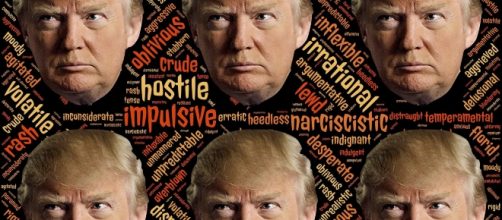President Trump and his spokespeople use terms which may not be familiar to many people but if you read the cautionary tale in the novels “1984” you can guess what comes next.
Fake news wildly different definitions
There are two ways to define “Fake News,” one is the definition which is apparently being applied by President Trump. The other is how the news media and many outside his inner circle define it.
The problem comes when these two radically different definitions come into conflict so it is important for everyone to give some serious thought to what each side means when they use these terms.
Insiders on both sides of the question know what they mean, but it is certainly confusing for the general public - since this is becoming very important some thought needs to go into what the two sides of the argument are.
The media and others
Reporters seldom use the term fake news and just call those stories lies or hoaxes, the majority of people not working for or strongly supporting President Trump think of fake news very differently than The White House does.
To most people, fake news can be sub-divided into two categories, both of which President Trump would disagree with. One category includes blatantly false stories which run on the Internet just to make money. Those reports often begin on Facebook (which is working on ways to stop them before they go viral.) Those include the claim that The Pope gave a public endorsement to candidate Trump.
Other blatantly fake news was meant to be humorous and the creators had too high an opinion of the Internet public and didn’t think anyone would believe them. This isn’t new, Bigfoot was one fake news story which ran for years even after the person who faked it confessed.
H.L. Mencken said, "Nobody ever went broke underestimating the intelligence of the American people." P.T.
Barnum may have said, "There's a sucker born every minute." Today many Americans are wishing they could find Barnum's Great Egress.
One big fake news story was the report that Obama banned reciting the Pledge of Allegiance in schools. That was carried on an equally fake ABCnews site and generated more than 2 million shares or comments, many from people who actually believed it.
Another whopper of note was that ISIS ordered Muslim voters to support Clinton, and yet another was that a Trump protester was paid $3,500 (all false).
The second but related category of fake news is created when President Trump repeats falsehoods such as “murder rate is highest in 45 years,” or "I had the biggest Electoral College win since Reagan," or when Kellyanne Conway referred to nonexistent terrorist incidents. In other words, false or completely invented stories pushed and repeated by Trump and his spokespeople.
Trump’s definition of fake news
This one is actually easier to spot. Any news report which criticizes President Trump is labeled by him as “fake news” put out by “lying media.” It doesn’t matter if his own staff say the news is true or that Trump himself confirms it when he says leaks are true, but claims reporting them is fake news.
This is pretty much an automatic reaction even when journalists merely repeat President Trump’s own tweets or on-camera statements. If he doesn’t like it it is obviously “fake news.”
Threat to democracy
Unfortunately, most people don’t watch much news and have too much going on in their own lives to fact check any of this nonsense so many accept these claims.
A recent Quinnipiac poll found only 37% of the American public as a whole trust Trump’s “facts” more than they trust the media. The majority, 52% trust the news media over President Trump. Among Democrats, the number jumps to 86% and even half of Independents tell pollsters they trust reporters more, while 38% trust Trump more.
Republicans trust Trump more (78%) with only 13% of them trusting the media more.
President Trump really is bringing the American people together. Unfortunately for him, they are coming together to oppose him.

